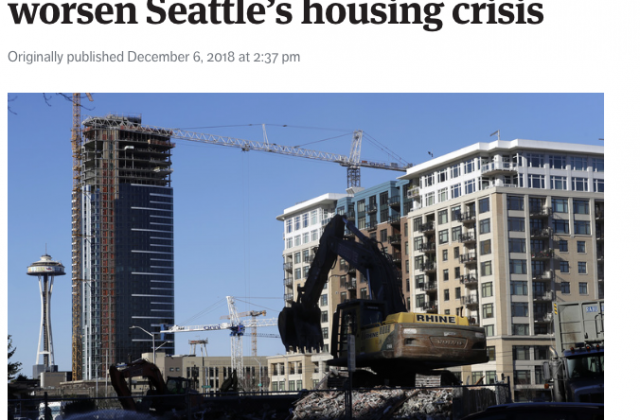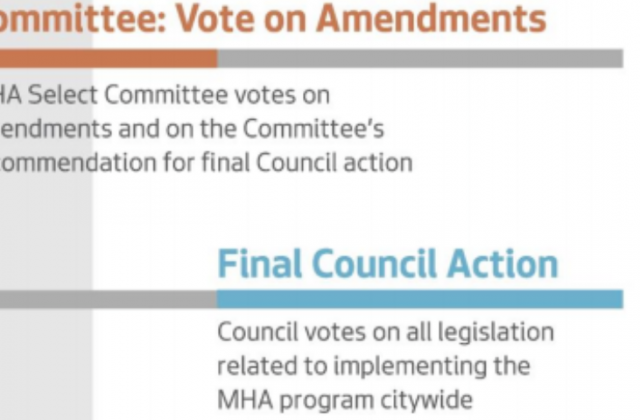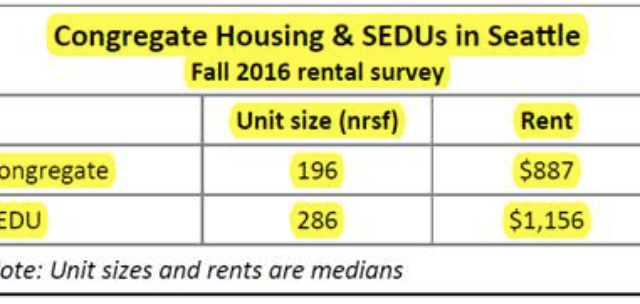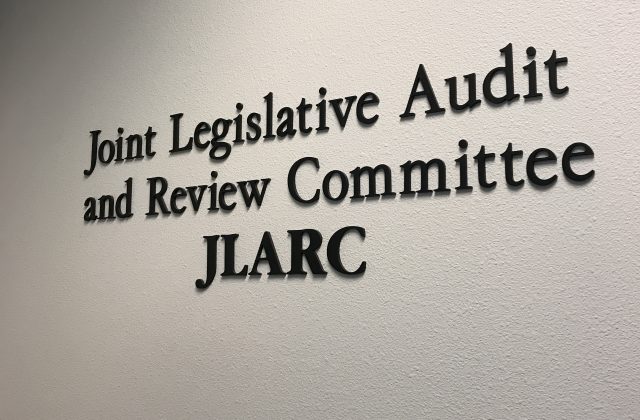The Problem With MHA: Seattle For Growth in the Seattle Times
On Friday the Seattle Times printed an editorial I wrote about the problems with Seattle Mandatory Housing Affordability (MHA) program, their version of Mandatory Inclusionary Zoning (MIZ). The program cleared a big hurdle before the Thanksgiving holiday when the Hearing Examiner ruled against neighborhood groups opposed to the upzones that are part of MHA. The editorial covers the same ground I’ve been going over for three years, saying MHA will make housing projects infeasible, and when they work it will be because prices have to go up to pay for the fees. Finally, the program is plainly illegal. What’s important about the editorial is the venue. It’s been difficult if not impossible to get the truth out about the fact that MHA doesn’t benefit all developers.
But there are big problems with MHA.
First, there were 10 signers of the grand bargain but only one large developer, Vulcan, signed for developers. There are hundreds of builders and developers in Seattle who were not at that table. There were three nonprofit developers, however, and the fees negotiated for extra capacity were favorable to projects in downtown and South Lake Union, not projects anywhere else.
I don’t think this one editorial will suddenly clear the heads of City Councilmembers and staff who have stubbornly ignored the numbers and facts about MHA. But at least its a prominent place to make it clear that developers didn’t demand more density. In fact, the whole program is being imposed on the housing economy with no involvement from the people that build housing.
As I’ve said before, we have been the victim of our own success in a way. Over the years the word “density” was one strongly associated with me and my message. It’s true that I said things like “density is good all by itself” and “density is people.”
What story or slogan could provide a strong enough theme to counter the NIMBY theme of a lone person defending their castle against greedy developers? That slogan, I think, just might be something like, “Density is People.”
My point was that it was that density was about people, more people in places they want to be. The only way to make that happen is bigger buildings on the same land where there are smaller buildings. Now, the MHA program has coopted this idea, throwing a bone to the dogs of housing demand. “You want density?” they are saying, “Well, here ya go! Now pay up!”
But incremental increases in Floor Area Ratio (FAR), a way of measuring density, doesn’t accomplish what many of us really want when we use the word “density.” And it really doesn’t help that the additional square footage being allowed is coming with a big price tag. And people who don’t build or understand how housing is built or financed seem to think that the “modest upzones” are some kind of win.
Slogans are important. They help communicate complex issues in a simple, direct way. But we have to be smart enough not to buy into the slogan so completely that we forget the underlying complexity when making policy. What “more density” includes is political and cultural shift that recognizes that housing is fundamentally a good thing, not an impact that has to be mitigated. The MHA program assumes that housing is bad, that it is hurtful and destructive and the only way to ameliorate that is to tax it, punish builders, and then give money to “good” developers who build affordable housing.
So called, “urbanists” have completely missed this point and have been cheering on MHA as if it was a solution. The editorial at least gets on the record that most of the people who understand and know how housing works and who build and operate it don’t want costly increases in FAR, they want to build more housing. Those are very different things.
Warning: Full MHA Likely to be Imposed by End of March 2019
We are nearing the end game of the legislative part of Mandatory Inclusionary Zoning (MIZ), the requirement that all new development included rent restricted units or pay a few in lieu of that inclusion. The money generated from this tax would go to fund non-profit housing. I’ve warning and fighting against this for 3 years. The last hurdle for the Council was jumped when the neighborhoods efforts to stop the program, called Mandatory Housing Affordability or MHA by the City, failed at the Hearing Examiner. Here is their full schedule just recently published.
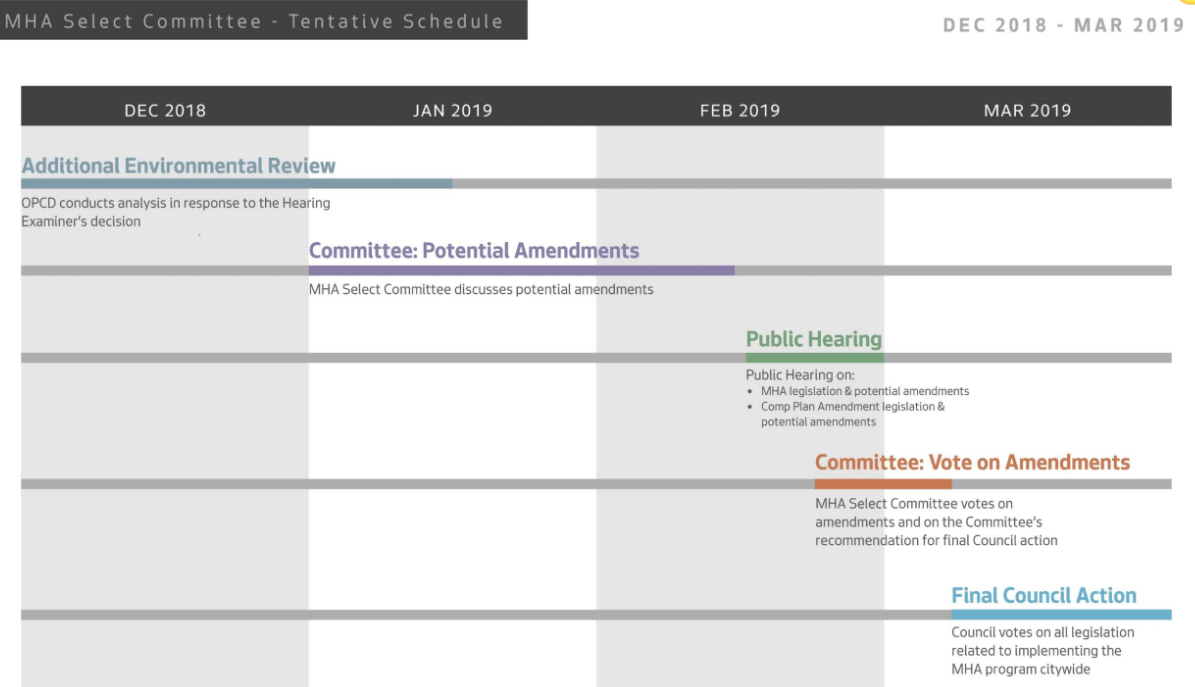
I don’t know if the development community is just stunned, or if they haven’t grasped what this really means. Across the city of Seattle projects ranging from townhouses to larger apartment projects will be subject to arbitrary fees for every square foot of the new building. I’ve still been getting questions from builders and developers wondering if they only have to pay for the bonus area. No, it’s everything.
We’ll keep sounding out whether we can pull together a legal challenge. This will require fortitude. It will require money. What’s so ironic is that everyone thinks we have “deep pockets.” We don’t. If we did, this would already be in court. Instead we have hard working people too busy to think about this and others who are just bracing for it.
One additional warning: prices for housing are falling. If someone out there thinks that higher prices will rationalize, that is, absorb the fees I wouldn’t bank on it. We’ll be taking a closer look at this.
If you want to keep a strong and principled voice in the debate on housing in 2019, please click the big button below and donate to Seattle For Growth.
Why is Non-Profit Housing So Expensive? Take a Closer Look at Unit Size
We’re waiting for the official release of the Joint Legislative Audit and Review Committee (JLARC) study on why or whether non-profit subsidized housing is more costly to produce than market rate, for-profit housing. Today at Forbes I go on at length about why that is the case. I think the answer may be that market trends favor making units smaller, even one and two bedrooms, in order to get more units on a site. Why? When more units are on a piece of really great land, like in dense places like Capitol Hill or the University District or even Ballard, it means the cost of the land is spread among a greater number of people. It’s just math. I use the analogy of a dinner check. If you have 12 people splitting the check for the same amount of food, the per person price is less than if it were 5 people. When it comes to space, people in the market are willing to make that trade.
But here’s the problem: when you don’t have to worry about how much rent someone is going to pay because there is a limit on that rent, you don’t have to compete. The rent is already set in a non-profit unit. There isn’t, apparently, a way to lower that rent except by fiat from government funders or if more funding is found to offset costs. Market rate developers, contrary to the mythology, want to create lower prices for their product. It’s called competition, and when there is more housing, that means price pressure start doing downward instead of upward. Non-profit developers don’t have people shopping around for their units, instead, they are on years long wait lists. If one opens, it’s like winning the lottery. Imagine if non-profits just made all their units smaller, small enough to boost the number of units on each site.
We know this is how it works. A chart from Dupree + Scott:
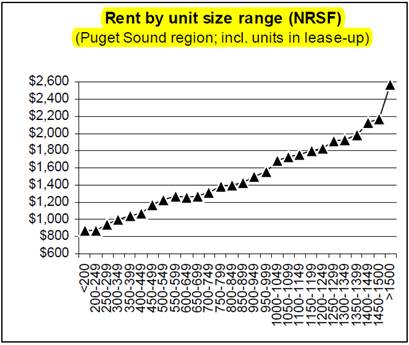
I quote David Neiman’s post at Sightline, but it is also worth taking a look at his post here, on Seattle For Growth, to learn more about why unit sizes are trending smaller, especially when land in desirable neighborhoods gets expensive.
Unit size and affordability. At various times we heard skepticism that regulations that raise or lower the size of small apartments make much difference in the rent that people pay. Market survey data shows us otherwise. The figures below are from Dupre & Scott’s Oct 2016 Apartment Advisor Report. The first chart shows a direct linear correlation between unit size and rent. The second chart compares the average rent for the median congregate housing unit vs. the median SEDU. Note that the SEDU rent is over 30% higher than its smaller cousin. It’s also noteworthy that the average unit size for SEDUs is weighing in at 286sf, well above the statutory minimum.
When the JLARC report is public, I’ll write what I think about it. But keep your eye on unit size. Almost all other things being equal — labor, materials, land etc. — it may be that what we should be pushing for is smaller units to lower per unit costs of subsidized housing so there is more of it and less need to squeeze market rate developers for cash with schemes like Mandatory Inclusionary Zoning.
Keep a strong, clear, principled voice for growth and more housing. Support Seattle For Growth with a contribution online. Just click the big donate button below.
First Read of JLARC Study: More Smaller Units Could Lower Per Unit Costs
The Joint Legislative Audit and Review Committee (JLARC) has released their study of housing costs that we supported in the State Budget in 2017. It was supposed to compare non-profit housing costs with market rate housing costs. It didn’t do that. In spite of our offer to help JLARC get market rate data, they said that it couldn’t be found. Instead, JLARC used estimators to look at projected and actual costs of six projects. They also looked at other comparative costs year over year and the costs regionally between different projects with Low Income Housing Tax Credits (LIHTC). It’s not the study we wanted but there is still some useful information and recommendations. But they did point to some important differentials worth looking at like unit count.
First of all, while the first headline, “Development costs for six projects are consistent with independent estimates” might seem to undermine our continuing claim that non-profit housing costs more to build, but it doesn’t. What JLARC did is hire “professional cost estimators to calculate a retrospective cost estimate for each housing development.”
But this doesn’t tell us much. It’s kind of like saying, “I’m going to buy an Aston Martin and I expect to pay $299,000.” If I paid $307,000 I guess one could argue I was “within range” of what I expected to pay. This is not particularly useful information when trying to figure out if non-profit housing is normatively too expensive. What we wanted was a comparison of why, apparently, a for-profit project costs a lot less than a non-profit project. For example, why does the Plymouth Housing project at 501 Rainier cost $369,000 per unit while a comparable project down the street cost roughly half of that?
Nobody has suggested anywhere, certainly not me, that there is outright fraud or malfeasance in any of the programs or big overruns. The argument has always been about efficiency, the cost per unit and therefore the rate of production. Why is non-profit housing so expensive and therefore so scarce? Getting an estimate about what an inefficient system will produce and then concluding that it produced it as inefficiently as expected isn’t great research. It does sort of check off the list the question of whether costs are simply overruns or poor construction management; that is useful.
But is non-profit housing development inefficient compared to market rate, for-profit housing? Like most reports looking at this, JLARC doesn’t really draw that conclusion, but it is inescapable that they find that such housing is 15 to 18 percent more expensive than market rate housing and that non-profit is more expensive to build in Seattle in King County. They also conclude that the number of units is an indicator as well. This last point is one that I am coming to believe is a key to understanding why as JLARC says, “all things being equal,” the per bedroom cost for non-profit housing is higher than market rate housing.
This comparison in Exhibit 3.2 of for-profit and non-profit is between producers of LIHTC tax credit programs. That is a useful comparison and shows that even when using a subsidy, usually 4 percent tax credits, for-profit developers are more efficient.
As I mentioned above, the other thing the report uncovers is the importance of unit size. I wrote about unit size today at Forbes; there is a lot of incentive for producers and consumers of housing to make smaller units with lower rents in dense and popular areas. The reason is that as unit size goes down, so can rents. It’s the same thing as having 12 people divide up a dinner check for the same amount of food instead of 5. Developers have an incentive to squeeze more units on a site near transit, for example, because they can offer lower rents. Renters have been willing to sacrifice dozens, even hundreds of square feet for lower rent. It works.
However, non-profits don’t have this incentive. When I did my one non-profit project of 43 units, we struggled to make ends meet in the project. We did what we could do to save on materials and labor and anything else. There simply wasn’t much savings to be found. Had I thought at the time to reduce the overall size of the units, even the two-bedroom units, our project would have housed more people and been more financially feasible. And JLARC comes to same finding: costs per unit go down as unit count goes up.
I have a lot of respect for the work that the JLARC people do, but this study mostly misses the mark. It doesn’t directly answer the question about whether the market is more efficient than the subsidized system, nor does it conclude that it’s all about the same in the end. But it does find that indeed, that financing for non-profit housing is “more complicated”(page18). And it also points to location as a driver, something pretty obvious but important to document.
Finally, the JLARC report also, indirectly, acknowledges the private sector is more efficient by recommending that market rate developers do more LIHTC projects. Why? Because the market rate builders building LIHTC projects build them more efficiently.
In the end, the three recommendations — expand the LIHTC program for market rate developers, require the Commerce Department to do more diligence on final costs, and requiring them to report annually — are all solid recommendations. I’ve urged them to consider a fourth recommendation about unit size. And unit size might be the answer why the per unit costs for non-profit projects in Seattle are skyrocketing. If non-profit unit sizes have stayed the same over time, while for-profit units have gotten smaller, that could be the (or an) answer. There is still a lot more work to do, and we’ll share results of an analysis we’ve done later this month.
Keep Seattle For Growth in the debate in 2019. Make a contribution online today. Click on the big DONATE button.
Giving Tuesday: Why Give to Seattle For Growth Today?
Today is Giving Tuesday. We’re going with it and here’s our pitch.
Seattle For Growth is your advocacy organization; a voice for people doing good things for the economy and for housing in Seattle and all over Washington.
We aren’t lobbyists or lawyers. There are lots of good lobbyists and lawyers.
Seattle For Growth advocates for economic growth, for job creation, for more opportunity and innovation, and most of all, we are for more housing of all kinds everywhere in our state for people of all levels of income.
When no one else would, we debated rent control.
We appealed a downzone of Seattle’s low-rise zones.
We have appealed Seattle’s effort to impose impact fees.
We have been a lone voice speaking out against ruinous mandates for fees on new housing that will drive up housing prices.
And we’ve traveled the state talking with people in rural communities like Grays Harbor County that have received zero dollars from the states’ bulging Housing Trust Fund, money that is subsidizing Seattle’s overregulation of the housing market.
We helped create Fair Housing Washington, a political voice that will be critical in the coming year.
We have done what nobody else in the state has done or will do, take on non-profit housing developers that have lobbied for more and more money when they should be pushing, with us, for fewer and fewer rules, regulations, taxes, and barriers to the creation of housing.
I’ll repeat something I shared in a previous e-mail, said by someone who’s been in the real estate business for a long time but surely applies to everyone in the state who cares about creating more economic opportunity:
If you’re not willing to fight for what you want, then you deserve what you get.
Rules are important; they create certainty. But when rules prevent the creation of a good thing, more housing, someone has to push back. We know there are many advocates for more rules, more taxes, more limits, and more money for housing.
We need your support to keep up the effort in a big year ahead. If you want to read more about what we’ve done, click here. And if you’re interested in supporting Fair Housing Washington, click here.
Then click here or on the button below or send a check made out to Seattle For Growth, Roger Valdez, PO Box 2912, Seattle, Washington 98111.
Let’s keep up the fight in 2019!
